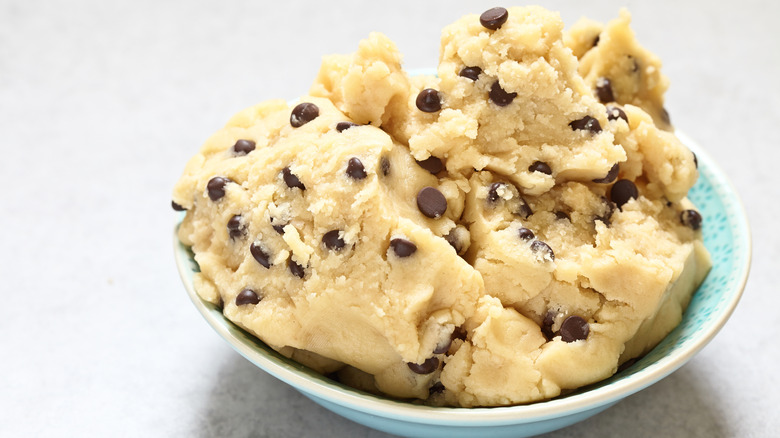Never Soften Butter In The Microwave When Baking Cookies
There are plenty of butter substitutes that can be used in all sorts of baked goods, but when it comes to cookies, there's nothing that functions as well as the real thing. Butter isn't always the most forgiving ingredient, and for that reason, practically every cookie recipe specifies exactly what type to use, whether that be browned butter, salted butter, or room temperature butter.
If the cookie recipe you're working with calls for softened butter (as most do) your go-to method is probably to stick it on a plate and zap it in the microwave for a few seconds. But as effective as this may seem, unfortunately it isn't the best option. According to Simply Recipes, this is because the microwave is notorious for uneven heating. Even if you don't see it on the surface, 10 seconds in the microwave is enough to leave your butter with pockets of fully melted butter, in addition to chunks that are partially cold, and others that are actually room temperature.
How you should soften butter
Softened butter, The Kitchn explains, refers to butter that's 70 to 72 degrees Fahrenheit. At this temperature, butter is still able to still retain its shape so that the cookies won't melt into a puddle in the oven. It's also the ideal consistency to both trap in air when beaten and coat the protein in the flour with fat. This prevents the formation of gluten, which in turn results in the perfect cookie texture.
The best way to get your butter to this state is to simply let it sit out at room temperature for a couple hours. But, if you're tight on time, Sally's Baking Recipes recommends a modified approach to the usual microwave method. Instead of microwaving the butter itself, microwave 2 cups of water for two minutes. Then, remove the water from the microwave and replace it with the butter. The residual heat will be trapped in the microwave, and when you leave your butter inside, it'll be perfectly softened in 10 minutes.

